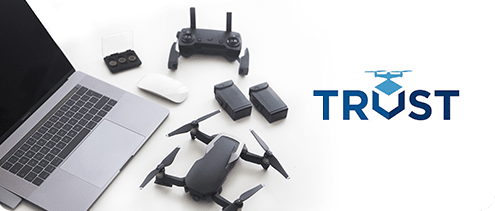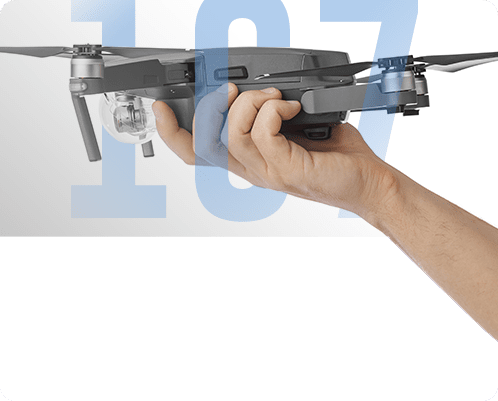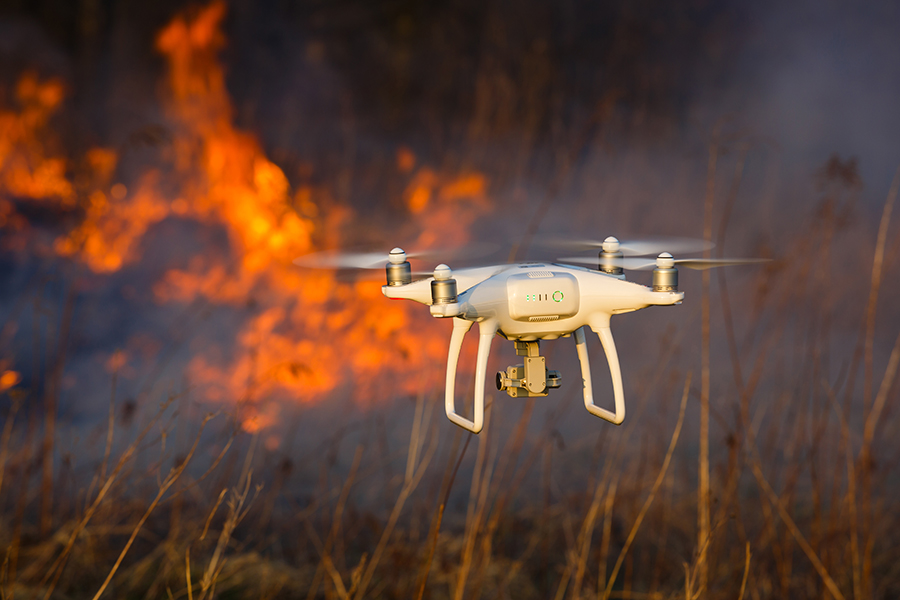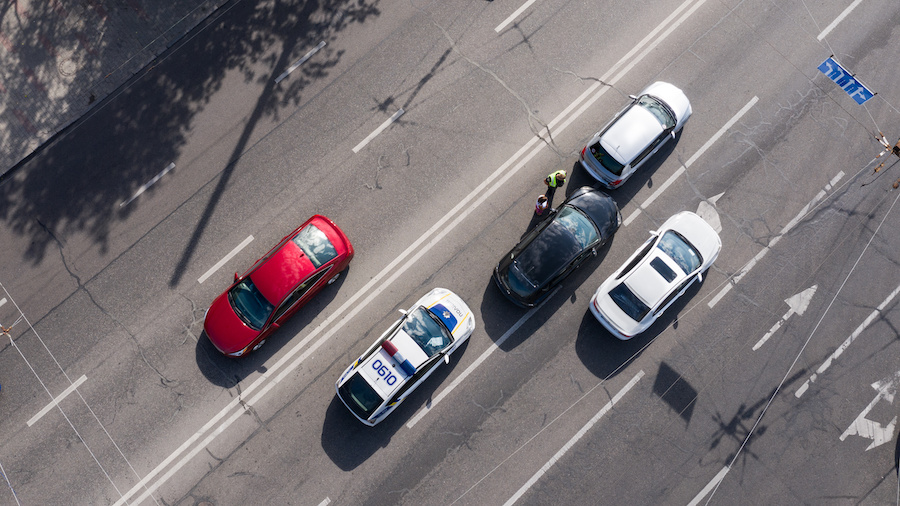While federal oversight of drone flight is no longer a new concept, it has been put in the spotlight recently because of a high-profile case where the FAA proposed a fine to a YouTube channel owner of $184,500.
On one hand, the case has become a cautionary tale for people who plan to upload drone videos without the proper documentation. On the other, it has also compelled drone pilots to take a closer look at what distinguishes commercial drone flight from recreational drone flight. In this article, we’ll be taking a close look at the two most important pieces of legislation – Section 44809 and Part 107.
What is Section 44809?
Section 44809 of Chapter 447 of Title 49 of the United States Code is more formally known as the “Exception for limited recreational operations of unmanned aircraft.” Published and implemented in May 2019, this law is the culmination of the FAA’s years-long attempt to impose regulations on recreational drone flight.
It supersedes all previously existing regulations, most notably Section 336 (Special Rule for Model Aircraft) and Subpart E of Part 101. We no longer need to go over the details of the older laws, as Section 44809 is now the only piece of legislation that is relevant to recreational drone pilots.
There are eight provisions under Section 44809 that provide qualifications and restrictions for recreational drone flight. You must adhere to ALL of these to be considered a recreational drone pilot. These are as follows:
- The aircraft is flown strictly for recreational purposes (determined by the intent of the flight)
- The aircraft is operated in accordance with or within the programming of a community-based organization’s set of safety guidelines that are developed in coordination with the Federal Aviation Administration.
- The aircraft is flown within the visual line of sight of the person operating the aircraft or a visual observer co-located and in direct communication with the operator
- The aircraft is operated in a manner that does not interfere with and gives way to any manned aircraft
- In Class B, Class C, or Class D airspace or within the lateral boundaries of the surface area of Class E airspace designated for an airport, the operator obtains prior authorization from the Administrator or designee before operating and complies with all airspace restrictions and prohibitions
- In Class G airspace, the aircraft is flown from the surface to not more than 400 feet above ground level and complies with all airspace restrictions and prohibitions
- The operator has passed an aeronautical knowledge and safety test described in subsection (g) and maintains proof of test passage to be made available to the Administrator or law enforcement upon request
- The aircraft is registered and marked in accordance with chapter 441 of this title and proof of registration is made available to the Administrator or a designee of the Administrator or law enforcement upon request
As with any discussion of recreational drone flight rules, the most important thing to remember is that these rules only apply if you are flying your drone just for fun. There is a good reason why this is the very first provision in Section 44809.
According to legal definitions, flying a drone recreationally or ‘for fun’ only applies if the operations are being done with no intention to earn money or aid a business. It is also worth noting that the intent of a drone pilot must be established at take-off. If you’re doing a recreational drone flight and flying under the associated rules, you can’t change your mind mid-flight and decide to record videos that you plan to sell.
An item in the rules states that recreational pilots need to pass an “aeronautical knowledge and safety test.” This is called TRUST and it can be completed here: https://trust.pilotinstitute.com
Aside from those specific provisions, the rules for recreational drone pilots are fairly standard. They are expected to yield the right of way to manned aircraft, fly only within visual line of sight, and maintain an altitude 400 feet above ground in Class G airspace.
What is Part 107?
More popularly known as Part 107, the “Small UAS Rule” is a 624-page document in Part 107 of Chapter 14 of the Code of Federal Regulations. It was created by the Department of Transportation and the FAA and started implementation back in June 2016.
Part 107 is actually the main set of rules that ANYONE operating a drone must be following, EXCEPT if they qualify for the Section 44809 “exception”. The reason 44809 is called an exception is because Part 107 is the main regulation to follow. This means that if your flight doesn’t qualify for the rules in 44809, you are automatically flying under Part 107 regulation.
Although it’s not apparent by the title, the Part 107 rules are the most important piece of legislation for commercial drone pilots. “Commercial,” in this context, refers to pilots who operate drones with the end-goal of earning money or aiding a business. But “commercial” is not the only purpose for following Part 107.
Aside from operations where the pilots receive direct remuneration, commercial operations also include capturing aerial videos and photos to sell or to be used for advertisement. Conducting drone surveillance of a business establishment, practicing your drone mapping skills, or doing an inspection of a building to check for damage are all examples of uses that fall under Part 107.
Obviously, the Part 107 rules are far too long for us to even attempt to summarize in this article. By far, the most important part of this law is that it requires drone pilots to secure a certification from the FAA before they can operate drones for anything other than recreational purposes, including commercial purposes. This is known as the Part 107 remote pilot certificate or more commonly, the “drone license.”
In a nutshell, this means that drone pilots cannot just operate commercially without a significant period of preparation. Earning the certificate requires passing an aeronautical knowledge test and going through a TSA background check. By making sure that all commercial drone pilots satisfy a minimum level of proficiency, the goal of Part 107 is to make commercial drone flight an overall safer practice.
Judging from just the length of the Part 107 rules, it’s quite clear that are more rules and restrictions that apply to commercial drone pilots compared to those who fly recreationally. Not only do commercial drone pilots need to be certified, but they also renew these certifications, provide documentation to the FAA in case of accidents, and inform the FAA of any changes in address. This is on top of the usual flight rules such as flying within visual line of sight and staying away from controlled airspace unless authorization has been granted.
All these restrictions are part and parcel of the greatest benefit of flying under Part 107 rules – the fact that you can earn money from the products of your drone flight however you see fit. The FAA no longer cares about this, as long as you comply with all the rules that relate to the safety of the national airspace.
Are you flying under Section 44809 or Part 107?
This is the question that stumps most drone pilots. Not knowing whether you’re flying under the rules of Section 44809 or Part 107 can easily get you in trouble, as we have seen with the recent case escalated by the FAA. To clear this matter, let’s look at it from two perspectives – in terms of the legal conditions and the intent of the drone pilot.
Conditions
There is an interesting paragraph in Section 44809 that people tend to gloss over as they focus only on the conditions of recreational drone flight. To quote, Section 44809 states:
“Operators of small unmanned aircraft (also referred to as drones) for recreational purposes must follow the rules in 14 CFR Part 107 for FAA certification and operating authority unless they follow the conditions of the Exception for Limited Recreational Operations of Unmanned Aircraft, discuss in this notice.”
What this paragraph says is that you are flying under Part 107 rules by default unless you comply with all eight conditions of Section 44809.
This might seem a little backward, especially for those who just want to take a drone out for fun. If you are flying strictly recreationally, then it would be worth the effort to know all eight conditions listed under Section 44809 to make sure that you are still flying under the correct set of rules.
The lack of this knowledge can be dangerous, especially when we keep in mind that Part 107 has a much longer set of flight restrictions compared to Section 44809. For instance, flying a drone at night is prohibited under Part 107 unless you have secured the required waiver prior.
Intent
By far, the most controversial part of the Section 44809 versus Part 107 debate is the question of intent. Basically, intent dictates if you are flying commercially or recreationally. However, how can FAA honestly tell what your intent is when you fly a drone?
The simplest answer is that they cannot. Instead, the FAA looks out for patterns of behavior or feedback from the general public to determine if there are violations of the currently existing drone laws. The FAA is far more interested in you flying safely than trying to figure out if the videos you posted on YouTube were filmed with the intent to get followers. As a general rule, if your channel is monetized or if you’re using your channel for commercial purposes, you obviously fall under Part 107.
How to avoid troubles with the FAA
With all the attention that the recent FAA case has caught, a lot of drone pilots are now understandably worried about getting into trouble with the FAA unwittingly. This concern mostly comes from the fact that many drone pilots – especially those who fly recreationally – are not aware of all laws and regulations related to drone flight.
Our first piece of advice to avoid any legal trouble is to know the laws. If you’re flying strictly recreationally, then you might consider printing a list of the eight conditions under Section 44809 and make sure that you satisfy all of them every single time you fly. A provision under 44809 also states that drone pilots should be able to cite the safety conditions (community-based organization guidelines) they are following in case a law enforcer or FAA representative approaches them.
Even if there are laws that you are not aware of, our second piece of advice still applies – don’t do anything stupid. A lot of the restrictions on drone flight are rooted in a basic sense of national airspace safety. Don’t fly your drone over people, near manned aircraft, or over a busy highway with moving vehicles. Don’t capture close-up images or videos of people without their permission. Reckless drone flight is subject to penalties, whether you’re flying commercially or recreationally. If you get into an accident that causes heavy property damage or serious injury, then you will almost certainly catch the attention of the FAA.
If the FAA does get in touch with you, the best course of action would be to cooperate. In the last few years, the FAA has taken on an education-based stance when it comes to the implementation of drone laws. Recognizing that this is a young and developing branch of aviation, the priority of the FAA when they catch violators is to make sure that they know what they did wrong and to make sure that they won’t do it again.
When the FAA imposes heavy fines on drone pilots, it is often the case where the drone pilots ignore repeated warnings and summons from the FAA. According to published news, this is what happened with the drone pilot from Philly who was recently fined. This is malicious neglect and never turns out well. The best way to de-escalate this situation is to be professional and get in touch with the FAA. Unless you did something so gravely offensive, there’s a good chance that you’ll only get a slap on the wrist.
Final thoughts
In the past few weeks, more drone pilots than ever have tuned in to the discussion of recreational versus non-recreational drone laws. We welcome this development, as we believe that educated drone pilots make for safer drone flight.
If there’s one thing we want readers to take away from this article it’s this advice – don’t do anything stupid and you probably won’t get in trouble with the FAA. Don’t be reckless and don’t do outrightly illegal or unsafe things. If you do something questionable, then absolutely do not post a video of it on YouTube.
We probably haven’t seen the last of this discussion. The legal landscape of drone flight has proven to be very dynamic, making it even more important for drone pilots to keep up. Should there be development, we’ll be sure to provide updates in our blog and on the Pilot Institute YouTube channel.





